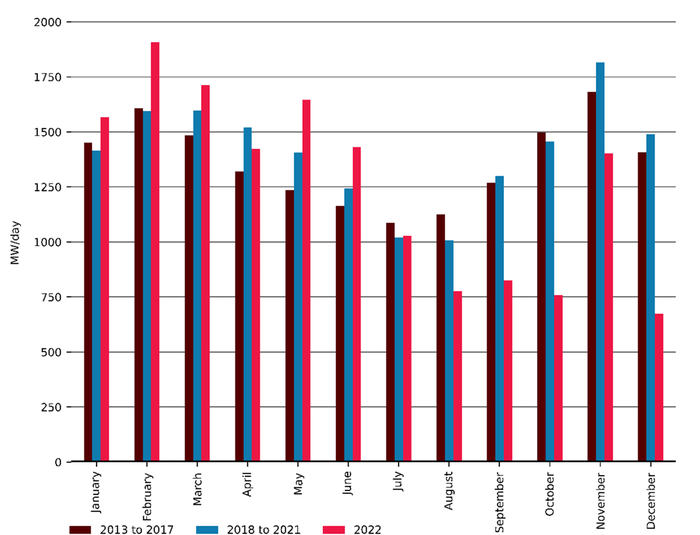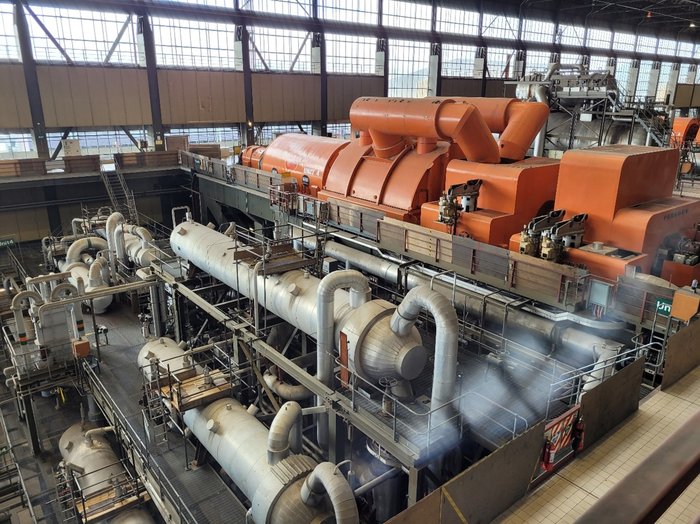Eye on electricity
When do power station outages occur?
- Consumers
- Generation
- Retail
- Wholesale
Electricity in New Zealand is generated by hydro dams, geothermal and thermal power stations, and wind farms. Some of these power stations were built recently, like the Waipipi wind farm in Taranaki which was completed in 2021. Others are over 60 years old, like the Roxburgh dam in Central Otago. Maintaining each power station is critical - power stations cost millions to build and generate the electricity that facilitates modern life across Aotearoa.
Power stations have regular outages for planned maintenance or to be recertified. Power stations also have unexpected outages when equipment fails. Most planned outages occur during summer when demand is low and less electricity generation is needed. During winter, minimal planned outages occur, as high demand requires more electricity generation.
Many South Island hydro outages are planned to align with New Zealand’s annual inter-island transmission cable outage in February. This cable outage reduces electricity transfer between the North and South Islands for about one week.
Figure 1 shows New Zealand’s average daily generation outages from 2013 to 2022. In 2020 the inter-island transmission cable outage moved from November to February and so outage volumes moved respectively.

Outages in 2022 differed slightly from previous years - outages through to June 2022 were high, but then fell below historic levels from July. This likely arose from the following factors:
- The Clutha Upper Waitaki Lines Project (CUWLP) upgraded transmission lines between the Clutha and Upper Waitaki, which enabled more generation from the Manapōuri, Clyde and Roxburgh dams to be transferred northwards. Some South Island hydro generators coordinated their outages with nearby transmission outages related to CUWLP.
- COVID-19 delays may have shifted scheduled outages from 2020/2021 into early 2022.
Next year, the inter-island transmission cable outage will occur between 23 February and 6 March 2023. So, parts of the Manapōuri, Benmore, Aviemore and Takapō hydropower stations have scheduled maintenance outages at this time.
The electricity sector coordinates outages through Transpower’s POCP portal. Generators log outage start and end dates and the amount of unavailable generation. Transpower uses POCP data for the New Zealand Generation Balance (NZGB) which predicts situations where simultaneous outages could pose a risk to the supply of electricity, especially if demand is forecast to be high.
Transpower’s calculations on NZGB, based on the current schedule of outages, show a good buffer of electricity supply compared to forecast demand for the rest of this year and first half of next year. Transpower regularly update these calculations as more information becomes available.
The Electricity Authority actively monitors trading conduct as part of the new trading conduct provision which came into effect on 30 June 2021. This includes monitoring generation outages to ensure participants comply with trading conduct rules.
Image: Genesis's Rankine Unit 4 at Huntly Power Station being prepared for outage, 26 October 2022.
Related News
Contract extension for commercial market making services
The Electricity Authority Te Mana Hiko has extended by eight months the end of the current contract to provide commercial market making services.
Information session for retailers on new mandatory reporting under the Retail Market Monitoring notice
We invite retailers to our information session where we will answer your questions ahead of the first report which is due on 31 August 2025.
Centralised wind and solar forecaster contract awarded
The Electricity Authority has awarded a contract to provide centralised wind and solar forecasting services to DNV Services.
